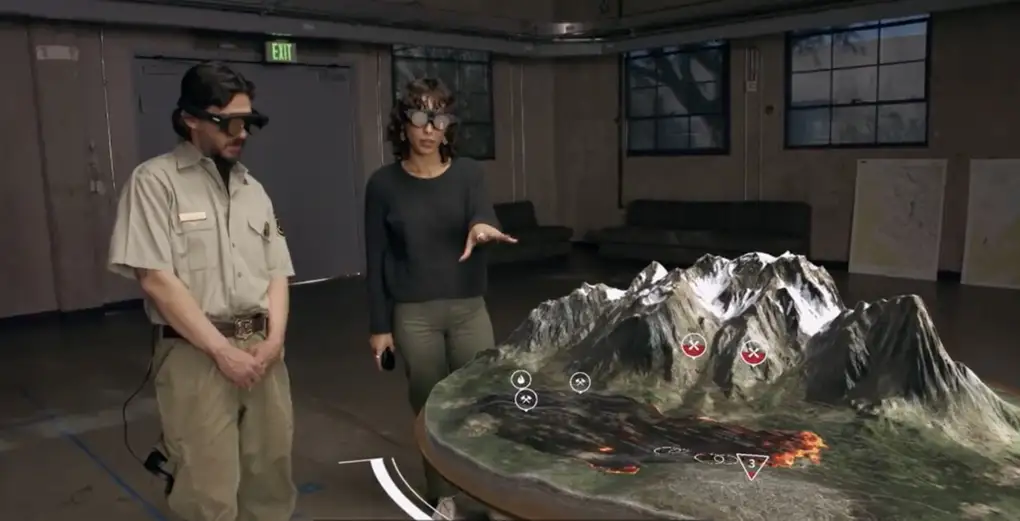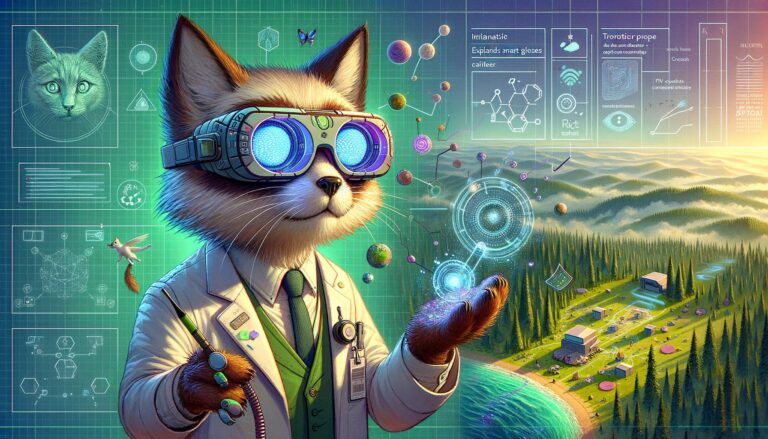In the ever-evolving landscape of military operations and readiness, the ability to continuously optimize and advance how forces prepare for conflict has become paramount.
Traditional one-size-fits-all approaches often fail to account for individual learning curves, skill gaps, and the unique challenges faced by personnel in diverse roles. By leveraging the cutting-edge capabilities of augmented reality (AR) technology, training instructors and program managers can gain deeper insights into trainee performance, behavior, and areas of improvement while reducing costs in the long term.
Data-driven insights powered by AR
In our recent article on AR for combat readiness, we explored how this technology provides immediate benefit to trainees, such as reduced cognitive load and enhanced situational awareness. However, these technologies have much further-reaching impact than what is immediately apparent.
Through sophisticated data collection techniques, such as eye-tracking, spatial mapping, and interaction logging, AR-powered solutions capture granular details about trainees’ focus, decision-making processes, and responses to simulated scenarios while providing opportunities for in-depth analysis that can be leveraged to refine existing curriculums and/or develop new ones.
How AR addresses the need for continuous optimization:
- Offers fast and easy real-time customization of training scenarios
- Captures individualized performance and behavior data
- Reduces reliance on instructor-led sessions, increasing training frequency and effectiveness
- Reveals critical areas for improvement in curriculum through aggregate analysis
- Enables detailed after-action reviews through data visualization
Real-time training customization
One of the most compelling benefits of AR solutions is the ability to customize and adapt training scenarios in real-time. By leveraging the data-driven insights provided by AR analytics, instructors can dynamically adjust the parameters, challenges, and complexity of simulated environments based on individual trainee performance. This level of real-time customization ensures each participant receives a tailored experience that pushes their skills to the appropriate level, fostering continuous growth and development.
For example, if a particular trainee is excelling in a specific scenario, the difficulty level can be increased on-the-fly, introducing additional variables or unexpected challenges to test their adaptability and decision-making under pressure. Conversely, if a trainee is struggling with certain aspects of the simulation, the scenario can be adjusted to focus on those aspects, providing targeted practice and reinforcement until proficiency is achieved.
This dynamic customization both enhances the effectiveness of the training and optimizes the use of instructional resources, ensuring that valuable time and effort are concentrated on the areas that will yield the greatest impact on operational readiness.
Individualized performance data capture
The real-time customization of training scenarios is made possible by the comprehensive performance data capture capabilities of AR.
AR solutions are usually equipped with a suite of sensors and tracking technologies that meticulously record a wide range of data points for each individual trainee:
- Eye-tracking sensors monitor visual attention and focus
- Motion capture systems analyze body movements, gestures, and interactions within the simulated environment
- Physiological sensors track biometric data, such as heart rate and stress levels
Combined, these sensors provide insights into a trainee’s emotional and cognitive state during various phases of the exercise. The data points can then be processed and analyzed to give instructors a holistic understanding of each trainee’s strengths, weaknesses, and areas for improvement. This level of personalized data-driven analysis ensures every trainee receives targeted feedback and guidance for continual growth.
Independent study opportunities accelerate training timelines
While the individualized performance data capture is a powerful asset, the true potential of AR solutions extends far beyond optimizing instructor-led training sessions. AR flips the traditional training paradigm by reducing the reliance on traditional classroom and field environments, enabling more independent study opportunities.
Trainees can engage in self-paced, immersive practice sessions tailored to their specific needs and skill levels. This self-guided approach alleviates the demand for instructor availability while also empowering trainees to take an active role in their learning journey, fostering a sense of ownership and motivation.
By enabling trainees to progress at their own pace, AR-based independent study opportunities reduce the time required to achieve skills and decision-making proficiency. This acceleration of training timelines translates to significant cost savings and more efficient resource allocation for defense organizations, all while maintaining or enhancing the overall effectiveness of the training program.
How aggregate analysis improves overall curriculum
As we’ve seen so far, the wealth of data collected by AR solutions provides invaluable insights for improvement at both the individual and curriculum levels.
By analyzing aggregate performance and behavior metrics, instructors and program managers can identify systemic areas of weakness or knowledge gaps that may be hindering the effectiveness of the current curriculum. For instance, if a significant portion of trainees consistently struggles with a particular tactical scenario or decision-making process, this could indicate a need to revise or reinforce that aspect of the training material.
Additionally, this analysis enables the identification of trends or patterns that may not be immediately apparent at the individual level. By studying the collective performance of trainees across various scenarios and simulations, defense organizations can pinpoint potential blind spots or areas where additional emphasis is needed within the curriculum.
This data-driven approach to curriculum evaluation and optimization ensures that training programs remain agile and adaptive, continuously evolving to address emerging challenges/threats and aligning with the ever-changing demands of modern warfare.
Maximizing success rates with data-informed AAR
One of the most powerful applications of AR analytics is the ability to conduct comprehensive after-action reviews (AARs) with significant depth and clarity. Going beyond traditional video playback and facilitator-led debriefs, AR data visualization provides objective insights and detailed dissection of the complete training exercise.
Through intuitive AR interfaces, instructors and trainees can visualize key data points captured during the simulation, such as unit movements, asset allocation, communication flows, and decision timelines. This macro-level perspective provides an eagle’s-eye view of the overall operation, enabling critical analysis of strategic choices, resource management, and command and control effectiveness.
From the big picture, instructors can also zoom into the micro level of each trainee. This ability to virtually step into the shoes of individual trainees provides crucial insights by retracing their precise movements, line of sight, and decision-making processes at any given moment during the exercise.
By visualizing within an immersive 3D environment, AARs become truly interactive and experiential, fostering a deeper understanding of the factors that influence actions and outcomes – building a solid foundation for the refinement of tactics, techniques, and procedures based on empirical evidence.
Selecting the right AR device
To unlock the full potential of these immersive after-action reviews and data-driven training optimization capabilities, defense organizations must carefully evaluate the array of AR devices on the market.
While many options exist, one device stands out as the clear frontrunner – Magic Leap 2. This next generation device distinguishes itself with a powerful suite of sensors and tracking technologies meticulously engineered to provide the high-fidelity data streams necessary for in-depth performance analysis and customized training experiences.
Get Started TodayCapturing core analytics
Equipped with advanced sensors that capture a wide array of data during training sessions, the Magic Leap 2 AR glasses include eye-tracking, spatial mapping, and interaction logs. These data points are crucial to understanding trainee engagement and behavior in simulated environments. For example, the eye tracking capabilities provide detailed insights into precisely where a user is looking, offering invaluable data for assessing attention and focus.
Cloud integration and extended analytics platforms
The integration of Magic Leap 2 with cloud platforms facilitates the storage, processing, and analysis of the captured data. These platforms provide robust tools for analyzing training effectiveness, customizing training programs based on analytics, and managing large datasets securely and efficiently. By leveraging cloud computing, training programs can scale without compromising on speed or performance, enabling real-time feedback and updates.
Enhanced Analytics Through Third-Party Software
Beyond native capabilities, third-party software platforms introduce additional layers of analytics. These platforms can analyze data points such as heart rate, pupil dilation, and more detailed behavioral metrics. Companies like Arvizio and Frontline.io provide solutions that integrate with Magic Leap 2 to offer enhanced analytics capabilities, such as real-time feedback loops, detailed performance tracking, and advanced simulation features that cater to specific industry needs.
AR transforms industries
We’ve explored how the use of AR analytics in training is profoundly impactful. The ability to gather and analyze such comprehensive data can completely transform the training process. It improves the efficiency and effectiveness of programs, enables personalized training pathways for individuals, and enhances learning outcomes and operational readiness.
Beyond training, the integration of AR technology with advanced analytics is setting new standards across sectors. Magic Leap 2’s capabilities, supported by secure cloud technologies and enhanced by additional software platforms, provide a powerful toolset for transforming how organizations prepare their workforce.
Get Started Today











+ There are no comments
Add yours